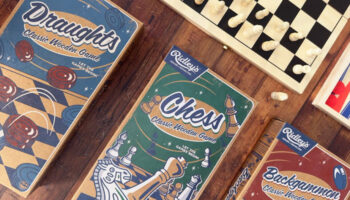Does the Metaverse Matter, and Should You Be Paying Attention?

Let’s start with the basics. The technological definition of a metaverse is a “Hypothesized iteration of the internet, supporting persistent online 3D virtual environments through conventional personal computing, as well as virtual and augmented reality headsets.”
Sounds complicated, right?
In practice, we’ve been living with them for some years already. It’s all about creating digital worlds where we can interact both with other people, and the digital world itself. Think World of Warcraft, Fortnite, and so on. They each have dynamic worlds, characters – even economic systems – and are all early iterations of the potential for metaverses.
So where does the potential lie for the toy and gaming industry? As things currently stand, there isn’t the low barrier to entry for products involving metaverses that would encourage mass consumer adoption, as the right equipment is required. Although a VR headset and the software or platform for the metaverse isn’t the only way to experience it, many of the more exciting parts are accessible via headsets. This, therefore, will exclude some demographics. High-cost, fragile and immersive technology isn’t necessarily the right format for toys aimed at children who love to smash things, for example.
But there are many uses right now for inventors, creatives and in the ideation process.
While toy and gaming products which force the user into the metaverse are unlikely to make it to physical stores in the immediate future, there is great potential in creating new products – and launching products which originated in the metaverse. We can already see this in the pitch process. Creators and inventors can use the virtual world found within the metaverse to showcase products to key-decision makers.

This makes for a far more engaging experience on both sides, as there’s a physicality that just can’t be captured in a Zoom meeting… And the manufacturer is more likely to remember it over the hundreds of other video calls.
There’s also great potential in ideation, as the metaverse is designed with collaboration in mind. It can be a complete conversion of the IRL experience into the digital realm. Just as you hop between whiteboard ideas, drawing diagrams and concepts in a real meeting space, so can you do so in the metaverse. Remote creativity no longer has to be a series of static talking heads… Instead it can be a dynamic and engaging experience once again. Assuming you have a good Wi-Fi connection, that is!
Meanwhile, there’s also a massive opportunity for product testing. We know consumers are willing to pay high sums for digital-only products, including hundreds – if not tens of thousands – on unique items to enhance their avatars’ accessories and fashion sense. So it stands to reason that toy makers can use the interest for such items as a way to test the market out and understand if consumers will buy the real-world version of the digital product. Less risk and fewer costs while still generating revenue.
It’s certain that a creative industry like toy and games will embrace the metaverse, but it’s still early stages when thinking about products since it currently only appeals to a small subsection of key demographics. As it develops, this will naturally change – but there’s still scope for the metaverse today.
Right now, the metaverse is a key differentiator for designers and inventors. In the immediate future, it’ll be a way to test products. But the real potential comes with mass adoption, where the toy and gaming industry will be able to develop innovative ideas with the metaverse at its heart.
–
To stay in the loop with the latest news, interviews and features from the world of toy and game design, sign up to our weekly newsletter here























